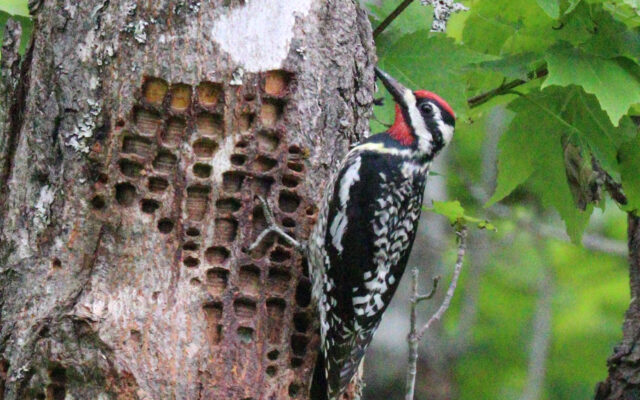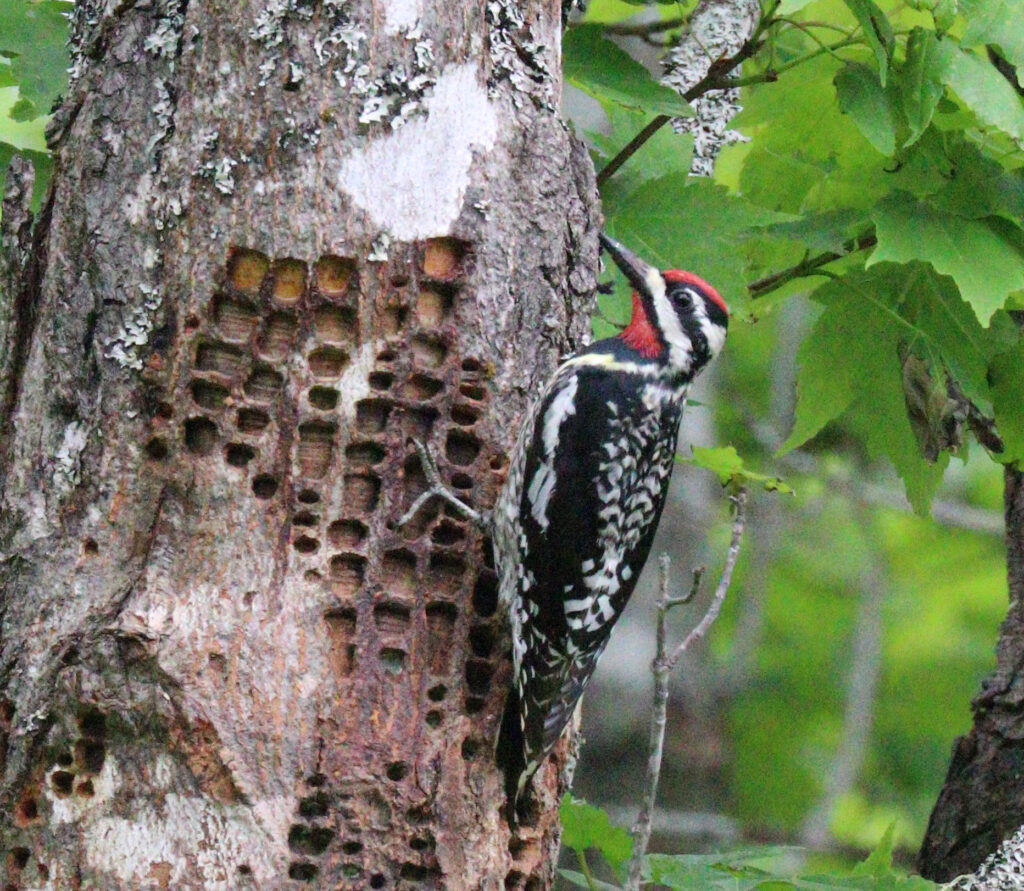
This game will test how well you really know Maine’s migrant birds
By Bob Duchesne
May is the month when most migrants return to Maine. This includes nearly all warblers, vireos, flycatchers, swallows and thrushes. However, the vanguard of returnees is sneaking back right this minute, under your very nose.
Let’s make a game out of it. For the rest of the month, give yourself points for recognizing the arrival of early birds.
Some are too easy. Give yourself zero points for robins on the lawn. No points for song sparrows. They’re already singing and courting. Red-winged blackbirds and common grackles have been raising a din for weeks. Turkey vultures have been silently soaring home all month, and numbers increase daily.
Some birds are wicked obvious, worth one point at most. Award yourself a point for observing an osprey. Now is precisely the time they start showing up. Great blue herons are trickling in, too.

YELLOW-BELLIED SAPSUCKER – The yellow-bellied sapsucker is among the legion of migrant birds that have begun returning to Maine this spring.
Add a point for eastern phoebes. There’s no doubt about when they return, since they just won’t shut up. Neither will the tree swallows. I always expect the first ones twittering around the sky before Easter.
Some birds will be merely passing through, but I’ll allow a point for white-throated sparrows and dark-eyed juncos. They often linger around backyards for a bit, before melting into the forest.
Add a point for any white-crowned sparrow or fox sparrow, if you spot one under your feeder this month. Add an easy point for chipping sparrows, which typically return in April, and will likely nest in your neighborhood. Brown-headed cowbirds are worth a point. They’ve already returned, but they are less obvious than the other blackbirds.
Award two points for each of these birds: winter wren and hermit thrush. They return here in April, but are more secretive than the one-point birds. You are likely to hear them before you spot them, if you find one at all.
Do you live near a field, pasture, golf course, or Bangor Mall? A killdeer is worth an easy two points. For a large field of thicker grass, an eastern meadowlark is a tougher two points to get in April. They’re becoming scarce.
Grab an easy two points by recognizing when yellow-bellied sapsuckers and northern flickers have returned, especially the sapsuckers. They are ridiculously noisy upon arrival, calling and drumming often. Their uneven drums peter out at the end. It’s easy to differentiate from the hairy and downy woodpeckers that are also drumming right now, as is their tendency to drum on metal.
Three warblers will return around Easter. On the first warm day following a night of southerly winds, pine, palm and yellow-rumped warblers will reappear. The pine warblers will go directly to the pine trees they call home, but the other two will often muddle around backyards for a week before proceeding to their nesting areas.
On that same morning, ruby-crowned kinglets often accompany the first wave of warblers. Whether you see them or hear them, give yourself two points. I always hear one first, usually coming from my neighbor’s yard. Blue-headed vireos are also worth two points. They typically arrive in late April.
Swamp sparrows are among the first birds to sneak back into wetlands in April. Although they’re very common, I’ll award two points because not everyone recognizes their slow trill from atop the cattails.
Broad-winged hawks are in migration, coming all the way from South America, passing through Texas, then spreading east across the continent. They usually arrive in a huge wave around mid-April. One day there are none. The next day, they’re sitting on telephone wires and tree limbs at forest edges across the state. Two points.
I’ll grant three points for the trickiest birds. American woodcocks have been back for weeks, but they’re well-hidden by day, and call only at night. They are field-edge birds, so don’t expect them in your backyard. But if you’ve got them nearby, you can enjoy their mating ritual sky dance from now to the beginning of June.
American bitterns are April arrivers. These secretive marsh birds hide in the tall reeds but — fun fact — the reeds aren’t tall yet. For the next few weeks, they’ll be strutting around the wetlands, thinking they’re invisible, apparently unaware that the reeds haven’t grown enough yet to conceal them.
The big wave of warblers comes in May, but a few can arrive early. A black-and-white warbler, black-throated green warbler, northern waterthrush or northern parula could add a bonus point to your score this month.
The game’s afoot. High score wins. Ready, set, go.